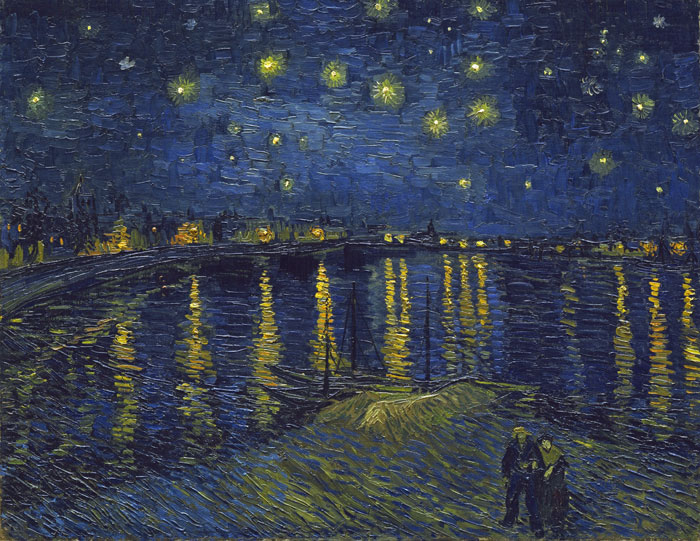Wednesday
This past weekend Julia, my mother and I went out onto Sewanee’s Lake Eva dock to watch the meteor shower. Although we saw only a single falling star, that one was spectacular. I share today a William Bronk poem about gazing at the stars.
Bronk is a poet’s poet, which is to say he is exceedingly difficult, even though he appears fairly straightforward. I can’t pretend to plumb his depths but I like some of the thoughts that float up. Here he reflects on how the mind can never wrap itself around the immensity of the universe:
The Various Sizes of the World
By William Bronk
We all get used to the regular stars in time.
After the start of learning how far they are,
what distances from earth, and even more
what space they keep apart from star to star,
where centuries divide the closest star’s faint light
from light beyond, the mind comes back at last
making the sky seem shallow like the earth
where, from the air, we see a city’s lights
spread out across the surface crust below
in constellations we read without surprise.
The sky is a similar surface pierced with lights
until, another morning, the sensitive plate
of a telescope has fixed a light so far
we never knew, so huge that a galaxy needs
to hold it. What address ever really finds
us in the endless depths the world acquires?
The earth has mass to hold our own mass down,
and the huge sun holds earth as though
a whirled cord were taut with it. But the mind
responds to the pull of its own gravities.
The mind is shifted outward into space
beyond the sun, where the surface sky explodes
softly forever like an endless wind.
Out and back the mind, the slide of the rule.
Where shall we add the logarithm of what
to find the actual product of any hour?
What point can fix the decimal of space
that joins the least remoteness of the earth
by tiny increments to the last star?
No, here’s an incongruous world, too large, too far.
In the first stanza, the poet talks about how we use the science of astronomy to situate ourselves. In doing so, the sky comes to seem “shallow like the earth.” It’s as though we are looking at our earth from an airplane, where we see
a city’s lights
spread out across the surface crust below
in constellations we read without surprise.
Then we learn that a telescope “has fixed a light so far/we never knew, so huge that a galaxy needs/ to hold it.” The universe has just grown again, so large that we can’t say we have an address within it.
But we do feel we have a solid location because “the earth has mass to hold our own mass down.” After feeling lost in space, suddenly we feel on stable ground. The size of the world has just changed again.
And then it changes yet again when we recall that this earth is held by a huge sun millions of miles away, as though a whirled cord were taut with it. Back and forth we go as “the mind responds to the pull of its own gravities.”
In the final stanza, gravity gives way once again as our mind drifts into space beyond “the surface sky.” Sometimes we think we know the universe and where we are in it and sometimes we don’t. Out and back we go, like a slide rule that claims to fixate definite points, only to be defeated at last.
Even the world that we thought we knew, that we use as grounding, is incongruous–which is to say, not in accord with our understanding. Like the vast reaches of interstellar space, this world seems “too large, too far.” Our mind always comes up short.
That’s how it seemed to us as we looked up into the heavens, searching for meteors.


